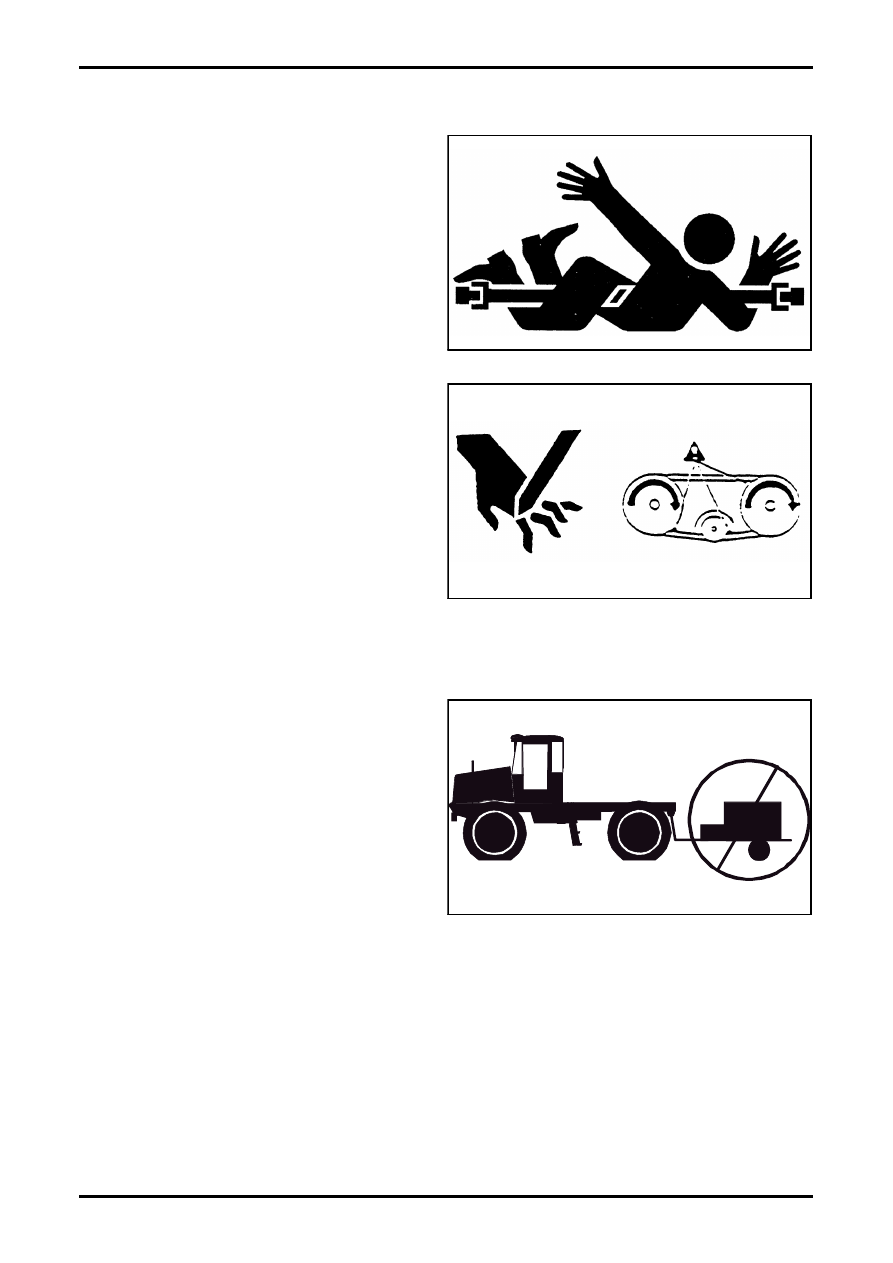Challenger Terra Gator 3244 Chassis. Manual - part 4

627333-A
1-13
Safety
STAY CLEAR OF ROTATING DRIVE
LINES AND MOVING PARTS
FIG. 16: Entanglement in rotating drive lines or moving
components will cause serious injury or death.
FIG. 17: Keep all safety guards and shields in place at
all times when operating the vehicle.
Turn the key switch to the OFF position. Remove the
key from the switch to prevent unauthorized operation
of the vehicle before removing any safety guards and
shields.
Wear close fitting clothing. Stop the engine and make
sure the drive lines are stopped before making any
adjustments or performing any type of service on the
engine or vehicle.
TOWING OTHER VEHICLES / TRAILERS
/ EQUIPMENT
FIG. 18: Towing of other vehicles without brakes is
NOT approved by Challenger.
Using the vehicle for towing can create a safety hazard
and can void the vehicle or system warranty.
MODIFICATIONS
Welding or altering the chassis in any way (such as
adding implement towing hitches) can cause damage
or failure of components and create a safety hazard.
Modifications not approved by Challenger can also void
the vehicle or system warranty.
FIG. 16
FIG. 17
FIG. 18